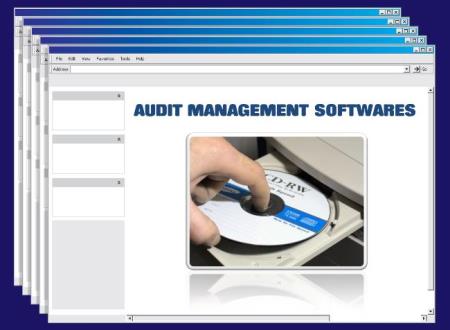Audit Management Software Developments
Audit Management Software Developments – An Outline
Audit management software is a type of software commonly used by auditors to make their work easy and make day to day tasks completed easily. It usually helps consolidate audit information for businesses to make coordinated decisions with a comprehensive idea of such company’s financial figures. Auditing software is also usually intended to speed auditing processes so businesses do not have to dedicate as much time to auditing.
There exists two major types of Audit Software namely;
- Engagement Management Software
- Generalized Audit Software
ENGAGEMENT AUDIT MANAGEMENT SOFTWARE
Engagement Management software is a type Audit Software that incorporates other products such as document storage, work paper management and electronic working papers.
Advantages of Engagement Management Software
Engagement Management Software is useful for:
a) Easy team sharing of information enabling reviewing.
b) Marking work flow standard.
c) Data can easily be backed up due to its Paperless nature ensuring there is no risk of losing audit files, lower storage requirements
Examples of Engagement Audit Management Software products.
1. TeamMate,
2. Pentana,
3. APEX
4. MKInsight.
GENERALIZED AUDIT MANAGEMENT SOFTWARE
The major function of Generalized Audit Management Software (GAMS) is to analyze data. It’s basic role is to source and analyze data at times in large quantities purposely to identify anomalies, errors and omissions. GAMS is rather used in gathering audit evidence than documenting
Advantages of Generalized Audit Management Software.
a) It helps improve efficiencies by automating the usually manual procedures.
b) There is a much lower risk by screening the whole population to reduce sampling frames
c) It offers Added value by providing more detailed insight into underlying records
d) Raises the range of testing available to the Auditor
Examples of Generalized Audit Management Software products
1. TopCAATs,
2. ACL
3. IDEA.
General advantages of an Audit software:
- You can be able to quickly create audit trails that assist you realize any transaction level, from the summary down to the details.
Managers can easily monitor the entire audit process and a copy documents audited will automatically be saved.
You can identify control issues and test for such problems as unauthorized employee-supplier relationships because you can know which employee accesses the system.
- Ensuring accounting compliance Using auditing software .Various company industries require ensuring compliance with different accounting standards. An auditing app is a solution designed to identify individual points of departure from accounting standards for your clients, contractors serving government departments to provide appropriate compliance or international organisations seeking to observe global standards.
- Improving competence your auditing. For you to ensure efficiency in auditing for your accounting firm you need to spend more time resolving errors rather than finding them. Auditing software gives automated processes to run checks on financial data to locate and identify potential errors or instances of fraud. In addition, you can seek the help of an official trade organization for advice or training.
- Setting Up Security Measures for Sensitive Data. Auditing software systems deal with crucial financial information. The importance of security is delicate by the fact that accounting providers are working with 3rd party data and need to ensure data security and integrity.
- Information Mining; Data mining and analysis software takes data found in certain forms, such as figures taken from the function of software, and analyzes and summarizes this data in a way that is understandable to humans in a process is known as data mining.
- Operational Safety; On most modern construction sites, rigorous safety management regimes are in place to minimize accidents and personal injuries. At the center of these regimes lies a thorough site safety lifting equipment inspection software used for the auditing process which is often managed using an established construction site safety system.
- Mechanization: Audit software is often designed to make routine many aspects of the auditing process to save time and company resources. There are various kinds of auditing software which enable auditing professionals to center on specific areas in an organisation thus enabling them to set priorities for action. Some auditing software helps in reducing storage space and increasing organization by integrating data that has matching information. Auditing software often try to sum up data so that this data can be clearly channeled to others.
- Scam discovery; Auditor software often attempts to discover unusual data to establish if there is any fraud going on within the company or within a specific unit. Auditing software frequently identifies gaps in data so that these gaps can be brought to the interest of the auditor.
- Audit Exporting; audit management software applications can often export data to diverse software programs so that this data can be delivered easily to other members of the corporation, according to Audit Software.
- Network safety; Some auditing programs are premeditated to charge network security. They give network administrators an plan of which security actions are the most effectual and also to establish if new security measures need to be implemented or restructured.
See more here
Auditing Roadways and Traffic Systems
There are many different processes involved when it comes to auditing traffic control systems. These include the following:
- roadway condition
- roadway signage
- roadway markings
- kerb condition
- traffic light performance
- traffic light operation
- vehicle movement
- vehicle types
- footpath condition
- footpath usage
The purpose of such an auditing process is to establish the relative safe operational condition of roadways, footpaths and traffic systems which are used by vehicles and pedestrians.
They are markedly different from safe traffic operational assessments as they are proactive studies as opposed to after the fact investigations. In addition, the team tasked with conducting the audit are completely independent from the organisations that are responsible for the roadway, footpath and traffic management infrastructure.
It is important that the people chosen to be on the auditing team are qualified professional from a number of different disciplines.
They would include expertise from the fields of roadway design, roadway safety, traffic control systems including traffic lights and signage, personnel experienced in roadway maintenance and computer software engineers who are capable of providing robust audit management software and who are familiar with highway traffic zone control guidelines.
Complete independence and probity are required in order to arrive at objective conclusions with any audit conducted.
The roadway and traffic management system auditors have a number of different responsibilities including the overall relative safety of the roadway infrastructure. The auditing team may also chose to focus on specific processes like roadway or auxiliary traffic light suppliers and associated systems. They can use visual examination techniques, statistical analysis, structural analysis and historical usage data.
Above all, audits strive to reach conclusions that will improve roadway safety, efficiency in use together with recommendations for further action going forward.
This is extremely important because investigations conducted after say a major traffic accident or repeated traffic congestion will be “too late in the day” to be effective. Prevention is always better than cure especially where human life and vehicles come together.

